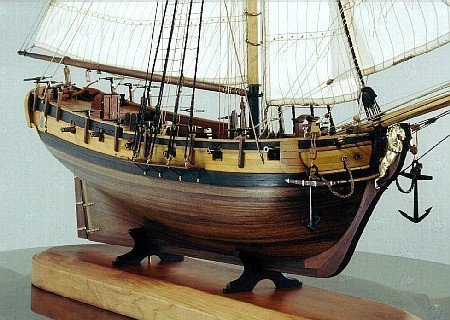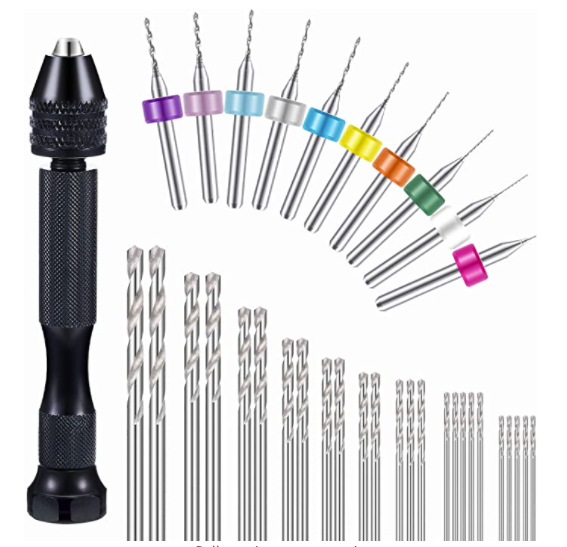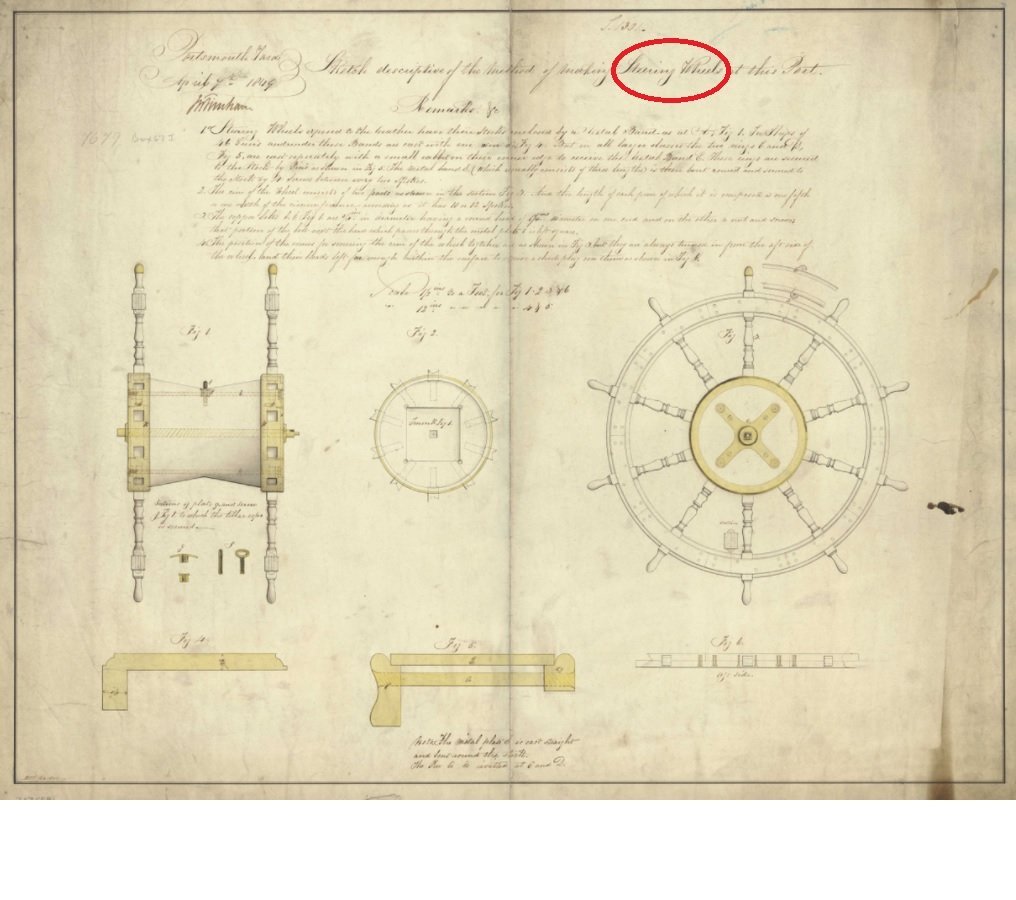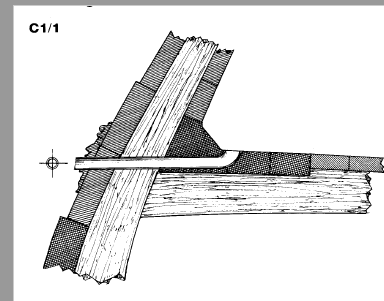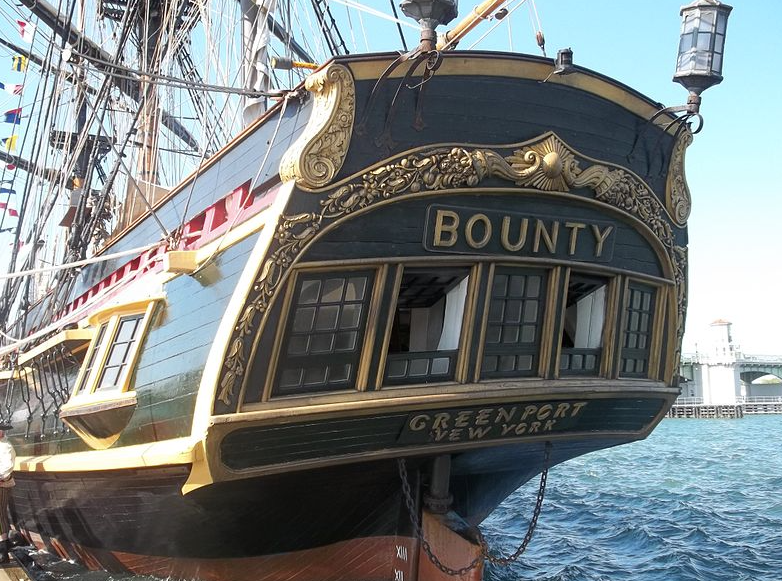-
Posts
3,170 -
Joined
-
Last visited
Content Type
Profiles
Forums
Gallery
Events
Everything posted by Gregory
-
Looking for a good "starter" pin vise set
Gregory replied to Capella's topic in Modeling tools and Workshop Equipment
I really like this one. The 3 jaw chuck is really useful for a wide range of sizes without changing collets like a lot of traditional pin vise'.. 36 Pieces Vise Hand Drill for Jewelry Making Set If you get something like this, be aware those burrs at the top are brittle and break easily, but it is easy to get replacements. -
I have read a lot of different sources regarding Bligh and the aftermath of the mutiny, and I don't recall any mention of the launch after the landing in Kupang.. Considering the times, there would have been nothing special about the boat.
-
Less costly rigging rope for Pride of Baltimore II?
Gregory replied to Brewerpaul's topic in Masting, rigging and sails
Lot of rope making info here: Discussions about Rope Making Did you check out Ropes of Scale? Another MSW sponsor. Another sponsor is Crafty Sailor Until you start making your own, stuff like Syren rope is still a bargain at $50. -
For whatever reason, I was able to get a color change on 100% polyester rope with Fiebing's leather dye. It seemed to be permanent and resisted wiping off after it was dry.. It was just an experiment, as I have no reason to change the color of the rope I make beyond changing the color of thread I use..
-
Any dying option you use may be subject to changing over time, and you won't know how long until it happens.. Have you looked at BenD's rope?
-
Old Montgomery Ward Model Kit worth building?
Gregory replied to kwaheltrut's topic in Wood ship model kits
That's never stopped anyone before..😄 -
I need help repairing an Artesania Latina Dallas 1:50 model
Gregory replied to Zeus-cat's topic in Wood ship model kits
Sorry I didn't get back sooner, but didn't find what I thought I might have.. -
Untangling and rerigging or start from scratch?
Gregory replied to Rgpracer's topic in Masting, rigging and sails
Keith, I came across this when browsing through the drawings at Wiki Commons, and thought I remembered someone commenting in this regard. Whoever drew this didn't get the word..😁 Link to Wiki. -
The counter looks like an excellent preview of your usual planking prowess.. It's almost a pity the that the fancy stuff will hide your fine work in that area..
- 840 replies
-
- winchelsea
- Syren Ship Model Company
-
(and 1 more)
Tagged with:
-
I need help repairing an Artesania Latina Dallas 1:50 model
Gregory replied to Zeus-cat's topic in Wood ship model kits
I will look in my stuff and get back to you later... -
The Master Korabel boats are similar to the Falkonet, and you can find them at our sponsor Crafty Sailor.
-
Waterways
Gregory replied to Ron B's topic in Building, Framing, Planking and plating a ships hull and deck
-
That is probably because many kit plans and instructions often present it that way. If you dig a little deeper, you will find many build logs where that is not the case.
-
- 346 replies
-
- Sophie
- Vanguard Models
-
(and 1 more)
Tagged with:
-
The plan I used was to illustrate how the rudder post enters the transom and determine the position of the tiller. Not necessarily how you plan to build Sophie. Your plan doesn't show where the rudder post enters the counter.. That would determine where the tiller would lie.
- 346 replies
-
- Sophie
- Vanguard Models
-
(and 1 more)
Tagged with:
-
Well, no.. All ships with a wheel did not have the same amount of space below decks to accommodate tiller mechanics, but it would have been adequate for the tiller as designed. Where does your rudder enter the transom? What kind of space do you have at that point for the swing of the tiller?
- 346 replies
-
- Sophie
- Vanguard Models
-
(and 1 more)
Tagged with:
-
The cables would do that if space permitted, however you have to consider how far up into the boat the rudder post extends in your ship as she sits. Is there enough lateral room for the tiller to swing below the cabin?
- 346 replies
-
- Sophie
- Vanguard Models
-
(and 1 more)
Tagged with:
-
Did Aubrey talk about the tiller and accompanying rigging that would have complemented a wheel? Your earlier drawings would put the tiller and cabling somewhere in the great cabin...
- 346 replies
-
- Sophie
- Vanguard Models
-
(and 1 more)
Tagged with:
-
Well, Tom says he wants to build according to the book, so I suspect Sophie will have a wheel..😀
- 346 replies
-
- Sophie
- Vanguard Models
-
(and 1 more)
Tagged with:
About us
Modelshipworld - Advancing Ship Modeling through Research
SSL Secured
Your security is important for us so this Website is SSL-Secured
NRG Mailing Address
Nautical Research Guild
237 South Lincoln Street
Westmont IL, 60559-1917
Model Ship World ® and the MSW logo are Registered Trademarks, and belong to the Nautical Research Guild (United States Patent and Trademark Office: No. 6,929,264 & No. 6,929,274, registered Dec. 20, 2022)
Helpful Links
About the NRG
If you enjoy building ship models that are historically accurate as well as beautiful, then The Nautical Research Guild (NRG) is just right for you.
The Guild is a non-profit educational organization whose mission is to “Advance Ship Modeling Through Research”. We provide support to our members in their efforts to raise the quality of their model ships.
The Nautical Research Guild has published our world-renowned quarterly magazine, The Nautical Research Journal, since 1955. The pages of the Journal are full of articles by accomplished ship modelers who show you how they create those exquisite details on their models, and by maritime historians who show you the correct details to build. The Journal is available in both print and digital editions. Go to the NRG web site (www.thenrg.org) to download a complimentary digital copy of the Journal. The NRG also publishes plan sets, books and compilations of back issues of the Journal and the former Ships in Scale and Model Ship Builder magazines.

